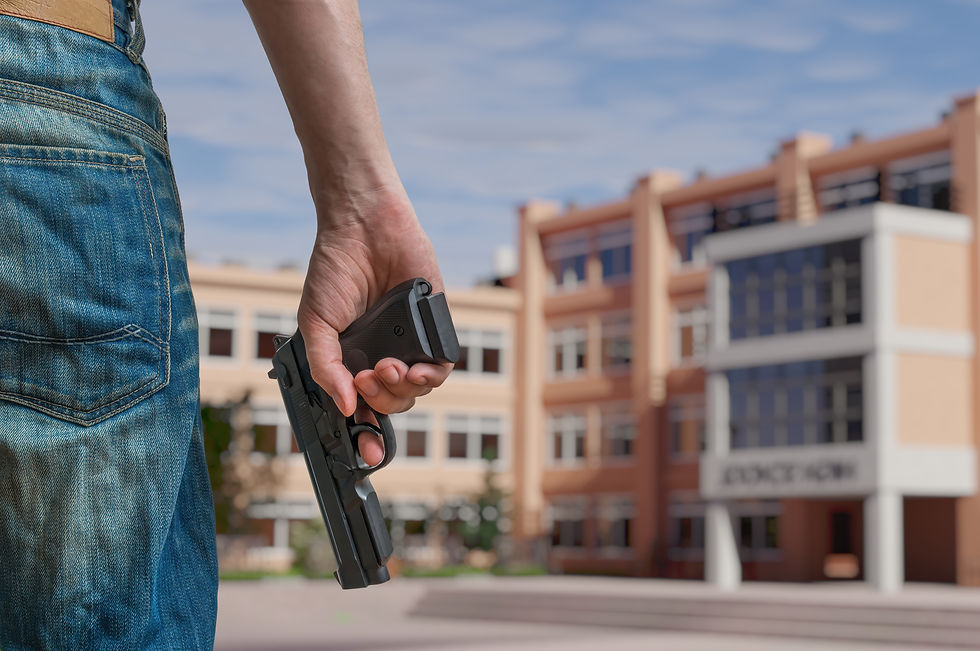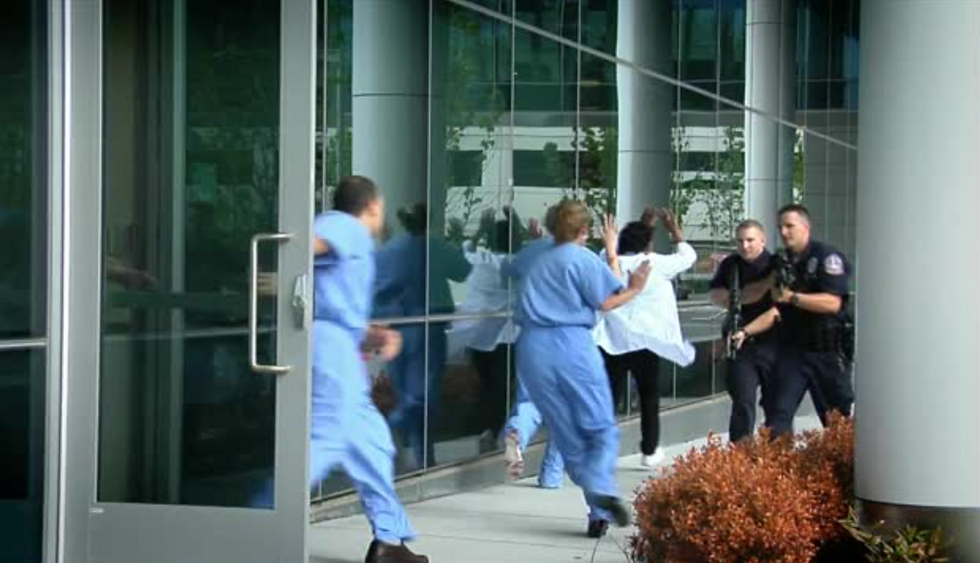Are Armed Guards Actually Making Schools More Dangerous?
- gene423
- Aug 16, 2023
- 4 min read

I recently encountered another article that discusses the effectiveness of armed guards in preventing school shootings. Once again, I observe recurring issues within the ongoing debate. Below, I present an in-depth breakdown of the prevalent assertions.
1. Target Selection by Mass Shooters: The article posits that mass shooters commonly choose targets based on a blend of factors such as target vulnerability, attack capability, and perceived impact. This combination significantly shapes the unfolding of such events, although a precise scientific or mathematical algorithm to anticipate attacks remains absent.
This notion finds support from concrete data. In the case of the Covenant School shooting, Police Chief Drake noted that a potential alternate location was considered, yet due to the suspect's assessment of heightened security, it was eventually disregarded.
Additionally, insights from both law enforcement and academia align with this perspective. As articulated by Javed Ali, a former senior official at the FBI and the Department of Homeland Security, as well as an associate professor at the University of Michigan: "From what we know about mass shooters, they tend to pick targets that offer the optimal chances of success. The interplay between target vulnerability, attack capability, and perceived impact predominantly governs the course of such incidents. Nonetheless, there exists no definitive scientific or mathematical algorithm capable of precisely forecasting the timing and modus operandi of such attacks."
2. Impact of School Security Measures: The article delves into the repercussions of security measures within educational institutions, particularly the presence of armed guards. A 2011 study suggests that an escalated police presence in schools correlates with a heightened referral rate of nonviolent infractions to law enforcement. Correspondingly, a 2021 study hints at a marginal increase in the likelihood of school shootings, chronic absenteeism, and other gun-related offenses in the context of armed guards' presence.
While the article extensively examines these studies, it fails to substantiate its assertion that armed security or police fail to prevent school shootings. A comprehensive review of the studies reveals the following insights:
The introduction of full-time School Resource Officers (SROs) seemingly results in increased gun-related offenses due to heightened police activities, which include detection and reporting within the school environment. It also potentially elevates the risk of a school shooting incident. Concurrently, the presence of an SRO appears to enhance overall student safety by reducing non-firearm-related violent incidents, such as physical altercations.
Additional studies support the premise that SROs contribute to a decline in certain forms of school-based violent offenses.
It's noteworthy, however, that the utilized methodology, Regression Discontinuity analysis, possesses inherent limitations. In fact, the researchers themselves acknowledge their use of "fuzzy" regression discontinuity analysis, indicating a potential source of bias. The primary challenge with this analysis lies in the variable's limited predictive power concerning the outcomes.
(Sorensen, Lucy C., Montserrat Avila Acosta, John Engberg, and Shawn D. Bushway. (2021). The Thin Blue Line in Schools: New Evidence on School-Based Policing Across the U.S.. (EdWorkingPaper: 21-476). Retrieved from Annenberg Institute at Brown University: https://doi.org/10.26300/heqx-rc69)
3. Racial Disparities and Criminalization in Schools: The article aptly highlights the risk of disproportionately impacting Black students due to the criminalization of school misconduct, which further exacerbates existing racial disparities in arrest and incarceration. Researchers cited in the article express apprehensions regarding the adverse consequences stemming from such policies.
Again, it is essential to acknowledge that even this study acknowledges the utilization of "fuzzy" research methods.
4. Police Use of Force in Schools: The article draws attention to instances where school-based police officers have employed tasers or stun guns against students, suggesting the potential for excessive force against students.
However, it's crucial to discern that the mere utilization of non-lethal force tools does not inherently denote unjustified action. Instances might arise where a taser is warranted, such as when a student poses a threat to others or themselves. Non-lethal force tools, including tasers and pepper spray, can significantly minimize injuries and expedite the cessation of violent encounters when compared to the use of physical force.

5. Building Relationships with Students through Security Personnel: The article acknowledges the potential for security personnel, provided they undergo thorough vetting and training, to cultivate positive relationships with students. Nonetheless, the article appropriately acknowledges that not all individuals bearing badges or firearms contribute positively to the school environment.
6. Alternative Policies for School Safety: The article introduces a range of alternative policies designed to enhance school safety. These include a focus on bolstering physical building security, refining training protocols, and implementing "school hardening" measures. Furthermore, the article underscores the importance of advocating for federal and state-level gun reform. Additionally, the article advocates for substantial investments in preventive measures such as mental health training, anti-bullying initiatives, and the enhancement of threat assessments.
All of these suggestions hold considerable merit, particularly when implemented in conjunction with other comprehensive security strategies. The combined impact of these strategies is poised to yield substantial benefits.
Why does this issue remain complex without definitive answers?

Several factors contribute to the complexity and absence of definitive conclusions in this matter:
Firstly, access to active shooter reports and evidentiary data is often restricted, limiting researchers' insights.
Secondly, biases associated with viewpoints on gun violence can exert undue influence on related discussions. Research outcomes, at times, diverge from the stated research purpose, introducing incongruities between research objectives and conclusions.
Furthermore, the adage "correlation does not imply causation" merits more prominence. While a correlation may exist between variables, establishing a causal link requires more robust evidence.
Lastly, the challenge of demonstrating the return on investment for security measures remains prevalent. Gauging the prevention of non-occurrence incidents proves formidable. Notably, certain active shooters have bypassed targets due to heightened security measures, as indicated by official statements and witnesses.
In reality, criminals generally evade apprehension, opting for the path of least resistance. This phenomenon echoes the principles of nature, where predators target the weakest members of a herd. Criminals, including active shooters, display a similar tendency.
With almost three decades of experience in both law enforcement and private security, complemented by my involvement in academic research and review, my perspective contends that armed security could indeed reduce the likelihood of active shooter incidents. However, I maintain an open-minded stance, advocating for the continual evaluation of research until empirical evidence surfaces.
Here is a link to the article that prompted me to write this blog. https://www.thetrace.org/2023/08/guns-armed-guards-school-shootings/







Comments